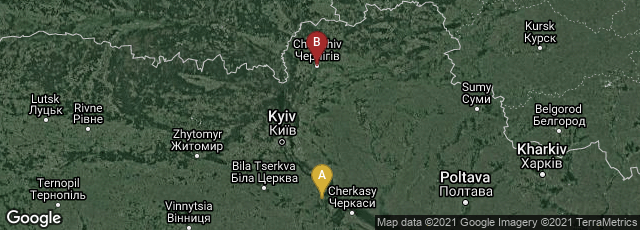

A: Babychi, Cherkas'ka oblast, Ukraine, B: Desnyans'kyi district, Chernihiv, Chernihivs'ka oblast, Ukraine
Huts built from mammoth bones found along the Dniepr river valley of Ukraine, and at locations near Chernihiv, in Moravia, Czech Republic, and in southern Poland, that date between 23,000 BCE and 12,000 BCE, may be the earliest structures built by prehistoric man, and thus the earliest examples of architecture. Some of the most notable of these mammoth bone huts were found in Mezhyrich (Межиріч, Mezhirich), a village in central Ukraine located in the Kaniv Raion (district) of the Cherkasy Oblast, approximately 22 km from the region's administrative center, Kaniv, near the point where the Rosava River flows into the Ros'. Since 1966 at least four collapsed mammoth bone structures have been discovered in Mezhirich.
"They are composed of several hundred bones and tusks arranged in a rough circle, between 6 and 10 m (20 and 33 ft) in diameter. A hearth typically lies near the centre of the former dwelling, and stone tools and other debris are scattered within and outside the structure. Large pits filled with stone tools, bone fragements and ash have beenf ound near the houses.
"Considerable effort must have been required to assemble these structures. Even in a dry state, large mammoth bones weigh hundreds of pounds. It has been suggested that the bones and tusks were recovered from hunting episodes in which entire herds of adult mammoth and their young were slaughtered. A more likely explanation is that they were gathered from natural accumulations of bones perhaps at the mouths of streams and gullies near the sites. The primary purpose of the mammoth-bone dwellings which were presumably covered with animal skins, was probably shelter from extreme cold and high winds. Some archaeologists, impressed with the size and appearance of the structures, have argued that they also possess religious or social significance. The have been described as the earliest examples of 'monumental architecture' as as evidence of increased social complexity and status differentiation during the final phase of the Ice Age" (Paul G. Bahn (ed) 100 Great Archaeological Discoveries [1995] 54-55).